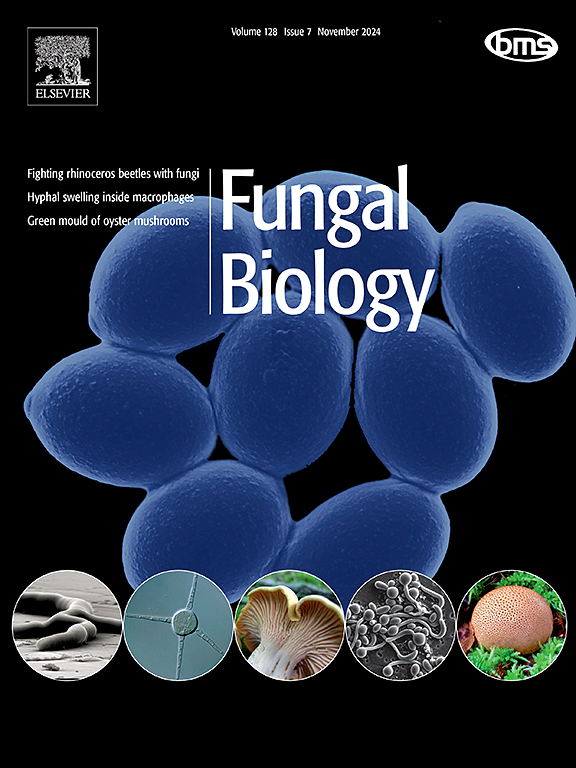转录因子MrbHLH2显著影响罗伯特绿僵菌的抗逆性和昆虫毒力
IF 3
3区 生物学
Q2 MYCOLOGY
引用次数: 0
摘要
碱性螺旋-环-螺旋(bHLH)转录因子是各种生物过程的重要调节因子,包括真核生物的生长、发育和应激反应。尽管bHLH因子很重要,但它们在昆虫病原真菌中的具体作用仍未得到充分的了解。在本研究中,我们鉴定并鉴定了广泛应用于生物防治的罗伯特绿僵菌(Metarhizium robertsii)中bHLH转录因子MrbHLH2。亚细胞定位研究证实MrbHLH2主要位于分生孢子的细胞核中。MrbHLH2 (ΔMrbHLH2)的缺失导致对渗透和热胁迫的耐受性增强,同时降低了对紫外线(UV)辐射的耐受性。值得注意的是,ΔMrbHLH2的毒力明显降低,与野生型菌株相比,LT50增加了0.83天,附着胞形成延迟,角质层渗透受损,几个毒力相关基因下调。该研究有助于了解昆虫病原真菌bHLH转录因子,并强调了靶向这些因子以提高真菌病原体生物防治效果的潜力。本文章由计算机程序翻译,如有差异,请以英文原文为准。
The transcription factor MrbHLH2 significantly affects stress resistance and insect virulence in Metarhizium robertsii
Basic helix-loop-helix (bHLH) transcription factors are essential regulators of various biological processes, including growth, development, and stress responses in eukaryotes. Despite their importance, the specific roles of bHLH factors in entomopathogenic fungi remain inadequately understood. In this study, we identified and characterized the bHLH transcription factor MrbHLH2 in the entomopathogenic fungus Metarhizium robertsii, which is widely used in biological control. Subcellular localization studies confirmed that MrbHLH2 is predominantly located in the nuclei of conidia. The deletion of MrbHLH2 (ΔMrbHLH2) resulted in enhanced tolerance to osmotic and heat stress, while simultaneously decreasing tolerance to ultraviolet (UV) radiation. Notably, ΔMrbHLH2 exhibited significantly reduced virulence, as indicated by a 0.83-day increase in LT50 compared to the wild-type strain, along with delayed appressorium formation, impaired cuticle penetration and downregulation of several virulence-related genes. This study contributes to the understanding of bHLH transcription factors in entomopathogenic fungi and underscores the potential of targeting these factors to enhance the biocontrol efficacy of fungal pathogens.
求助全文
通过发布文献求助,成功后即可免费获取论文全文。
去求助
来源期刊

Fungal biology
MYCOLOGY-
CiteScore
5.80
自引率
4.00%
发文量
80
审稿时长
49 days
期刊介绍:
Fungal Biology publishes original contributions in all fields of basic and applied research involving fungi and fungus-like organisms (including oomycetes and slime moulds). Areas of investigation include biodeterioration, biotechnology, cell and developmental biology, ecology, evolution, genetics, geomycology, medical mycology, mutualistic interactions (including lichens and mycorrhizas), physiology, plant pathology, secondary metabolites, and taxonomy and systematics. Submissions on experimental methods are also welcomed. Priority is given to contributions likely to be of interest to a wide international audience.
 求助内容:
求助内容: 应助结果提醒方式:
应助结果提醒方式:


